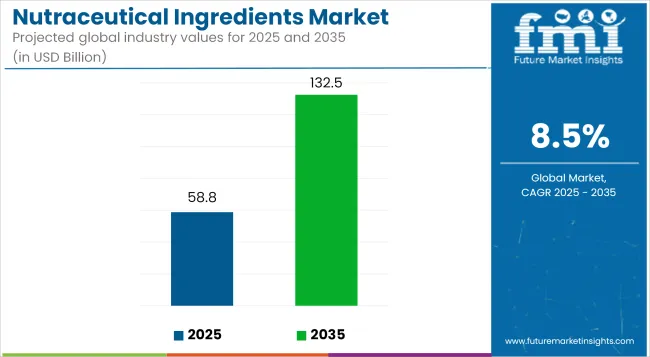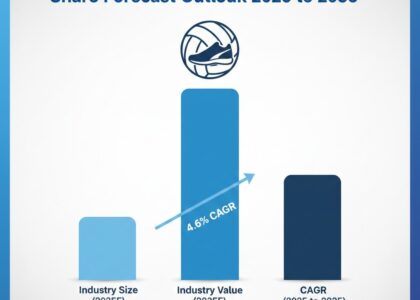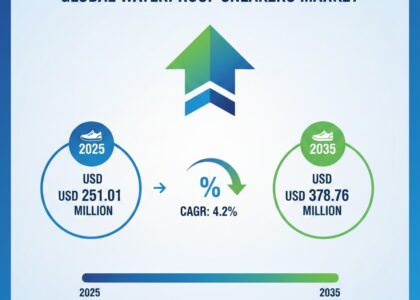
According to Future Market Insights, the nutraceutical ingredients market was valued at USD 54.15 billion in 2024 and is expected to surge to USD 132.5 billion by 2035, driven by escalating demand for health-boosting additives and fortified foods. The industry is projected to grow from USD 58.75 billion in 2025, reflecting an accelerating shift in how the world approaches nutrition.
But the rise of this industry isn’t just a commercial win—it’s a mirror held up to a deeper crisis: we’re using engineered nutrients to patch the gaps left by broken food systems and declining dietary quality.
Explore Emerging Market Insights: Request a Sample Report Now: https://www.futuremarketinsights.com/reports/sample/rep-gb-16939
A Market Born from Deficiency, Not Abundance
The nutraceutical category—spanning amino acids, probiotics, botanical extracts, omega-3s, and vitamins—is booming because whole, nourishing food is no longer a given for much of the global population. Poor soil quality, industrial agriculture, ultra-processed diets, and economic inequality have all conspired to deplete the nutritional value of what’s on our plates. And so, we fortify. We supplement. We swallow solutions.
But this growing reliance on ingredients rather than ingredients-in-food should concern anyone who still believes in the power of eating well, not just supplementing well.
Nutraceuticals are designed to optimize health, but their very necessity exposes the failure of food to do the same.
High Demand for Market Insights: Discover Comprehensive Trends in Our Full Report: https://www.futuremarketinsights.com/reports/nutraceutical-ingredients-market
Functional or Failing?
There is no denying the appeal. Consumers crave quick fixes. Global awareness of immunity, inflammation, and mental well-being has risen dramatically in recent years, and functional foods promise results with minimal effort. A snack bar with added magnesium? A yogurt infused with adaptogens? A beverage promising focus and calm?
It’s modern wellness in a single sip or bite. And for companies, it’s a gold mine.
But for all the convenience, this approach comes with trade-offs. Nutraceutical ingredients often arrive in products still high in sugar, sodium, or processed starches. Health claims, even when technically accurate, can mask unhealthy foundations. And consumers, overwhelmed by jargon and marketing, may come to see food less as nourishment and more as a delivery mechanism for the next trending compound.
The Bigger Question
As the nutraceutical ingredients industry barrels toward its projected USD 132.5 billion value by 2035, we must ask: Are we solving the nutrition crisis—or just commercializing it?
This isn’t an indictment of the ingredients themselves. Many nutraceuticals offer real, evidence-based benefits. But the problem lies in over-reliance. We’re outsourcing health to isolated compounds while ignoring the fact that true nutrition is still rooted in real food, prepared and eaten with intention.
The booming market tells a story—not of progress, but of patchwork.
Final Word: What Are We Really Feeding?
Growth in this sector reflects more than consumer interest. It reflects the global erosion of nutritional self-sufficiency. The nutraceutical boom doesn’t just feed a market—it feeds a narrative that food, in its natural form, isn’t enough anymore.
And that may be the most dangerous idea of all.
Key Market Players
- Nestlé Health Science
- International Flavors & Fragrances (IFF)
- BASF SE
- Archer Daniels Midland (ADM)
- Glanbia Nutritionals
- DSM Nutritional Products
- Kerry Group
- Lonza Group
- Ingredion Incorporated
- Cargill Inc.
 Explore Food Supplement and Nutrition Industry Analysis: https://www.futuremarketinsights.com/industry-analysis/food-supplement-and-nutrition
Explore Food Supplement and Nutrition Industry Analysis: https://www.futuremarketinsights.com/industry-analysis/food-supplement-and-nutrition
Top Segments Studied in the Nutraceutical Ingredients Market Research Report
By Product:
By product, this segment is further categorized into probiotics, prebiotics, vitamins, amino acids, carotenoids, phytochemicals & plant extracts, protein, EPA/DHA, minerals, and fiber & carbohydrates.
By Form:
By form, this segment is further categorized into dry form and liquid form.
By Application:
By application, this segment is further categorized into functional food, functional beverages, dietary supplements, personal care, and animal nutrition.





